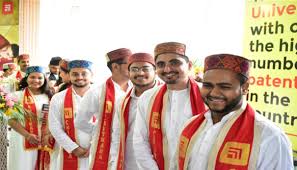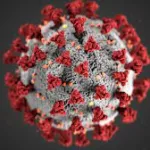New Delhi, August 24, 2024 — In a move aimed at shedding colonial legacies and promoting Indian culture, the Union Health Ministry has issued a directive to all central government hospitals and medical teaching institutes, including the All India Institute of Medical Sciences (AIIMS), to replace the traditional black gown and cap worn during convocations with state-specific Indian traditional dress. This directive aligns with the broader government initiative to reflect Indian heritage in formal ceremonies.
The circular, titled “Identification of Dress Code for Central Government Medical Teaching Institutes,” emphasizes the need to move away from attire introduced by the British during the colonial period. The Ministry has asked institutions to design an Indian dress code that reflects the local traditions of the state where the institute is located. These proposals are to be submitted to the Ministry for approval by the Secretary of Health.
This is not the first time the central government has promoted traditional attire for convocation ceremonies. The University Grants Commission (UGC) first recommended the use of traditional Indian dress in 2015 and has reiterated this stance over the years. The UGC’s push for the adoption of handloom fabrics for ceremonial attire is part of a broader effort to instill national pride and support the rural handloom industry.
The decision has sparked mixed reactions among the medical community. Dr. Dhruv Chauhan, National Council Coordinator of the Indian Medical Association-Junior Doctors Network (IMA-JDN), criticized the move, arguing that it diverts attention from more pressing issues facing the healthcare sector. “In these crucial times when doctors across the country are protesting, the government should issue directives on our concerns and grievances, from security to hygiene to preventive safety measures,” Dr. Chauhan said. “But we are witnessing such notices on dress codes, which are not our concern.”
However, Dr. Rishi Raj Sinha, National General Secretary of the Federation of All India Medical Association (FAIMA), expressed support for the initiative, emphasizing the importance of practicality and cultural pride. “Traditional attire should be chosen to ensure that it is appropriate for the climate and comfortable for those participating in the ceremony,” Dr. Sinha said. “Emphasizing local traditions in the dress code for convocation ceremonies can promote cultural pride and respect for the diverse heritage of India.”
The government’s directive aligns with the “Panch Pran” (five resolutions) outlined by Prime Minister Narendra Modi, which include shedding the remnants of colonial rule. The letter from the Health Ministry highlights the need to update convocation practices in line with these resolutions, calling the current black robe and cap “a colonial legacy which needs to be changed.”
The first instance of students wearing Indian traditional dress at a convocation occurred at Banaras Hindu University in 2015, where students donned saris and dhoti-kurtas. Since then, the UGC has consistently encouraged institutions to adopt similar practices, including the promotion of handloom fabrics, which the UGC highlighted in a January 2024 letter as not only a symbol of national pride but also a support for the rural economy.
As medical institutions prepare to implement the new dress code, the debate continues over the balance between cultural identity and addressing the critical needs of the healthcare sector.











